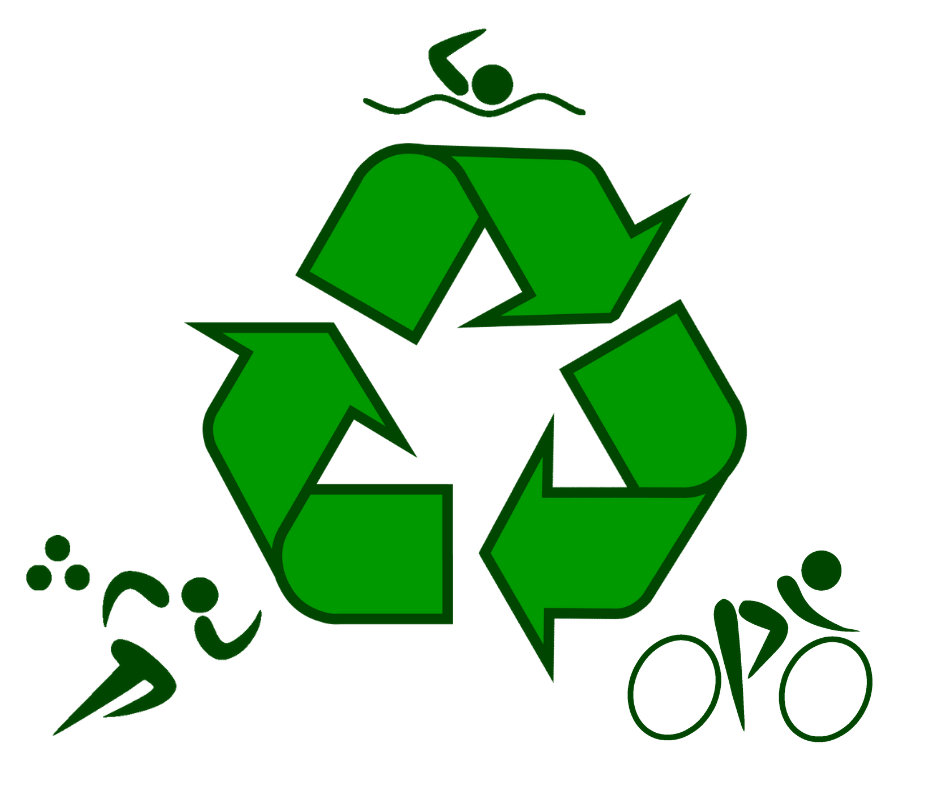
30 Apr The Familiar 3 Rs and a Smaller Triathlon Footprint – Part 1
Reduce
Safe to say that the sport of triathlon comes with a not-insignificant environmental impact. We consume a lot of ‘food’ in aluminized plastic packaging. We ride bikes made of a material that is virtually un-recyclable. We travel to training and travel to races. We wear clothing that produces microscopic plastic waste.
And before you think that this is going to be a massive guilt trip, I’ll put up my hand and own my own sport-related, environmental indiscretions. There are now two time trial bikes in my basement. Two. Who needs two TT bikes?? I am also looking to upgrade my essentially brand new watch to one that was just announced. So this series won’t be that series. I promise that you will see no photos of marine life choking on plastic straws. Instead, this will be a list of tips I’ve come across – and many that I already use – to reduce my own impact on our shared biosphere.
In part one of the story, I look at 3 ways you can reduce waste while still enjoying the shit out of your sport!
-
Unwrap it!
Without doubt, the greatest solid waste stream in endurance sport takes the form of single-use, plastic wrappers, pouches, and bottles. Here’s some math:
- A typical Ironman long ride is 6 hours
- I like to see athletes get up to at least 75g of carbs per hour
- A typical energy gel contains 25g of carbs
During that long ride, an athlete could easily go through 6x (75g / 25g) = 18 gels. 18 unrecyclable, take-forever-to-decompose, aluminized pieces of trash. Or 6 sport drink bottles, or 9 energy bar wrappers.
Fortunately, this is one of the easiest fixes on this list.
- If you like gels, consider buying a gel flask and the gels themselves in bulk. I know that both Hammer Nutrition and Gu sell gels in large containers. Better yet, switch to maple syrup! I love the stuff. It is as natural as you get, cheaper than gels, and tends to be tolerated very well by most athletes.
- Instead of ready-to-drink sport drink, buy the powdered product in bulk and use it in your own bottles. It’s easier to carry too, so all you need is water when you stop to fill up. Plus, with powder, you can custom tailor the concentration.
- Replace bars with homemade edibles or dry fruit. Bonus points for wrapping them in waxed cloth and not plastic.
-
Keep it local
The big name, big crowd races are super fun. I will not dispute that here. But traveling for races does leave a footprint. We are lucky to live in a healthy triathlon market with a variety of homegrown options for races up to the half (un)-Ironman distance. Sure, they may not carry that M-dot logo, but the work to get from start to finish is very much the same! Plus – much like shopping local – when you patronize local races, you directly support the business of triathlon in your back yard.
If you’re in Southern Ontario, check out the Toronto Triathlon Festival, Multisport Canada, and the Subaru Triathlon Series. I’ve raced them all, and can speak to having a blast at every event
-
Launder smart
There has been much attention paid to the plastic pollution ending up in waterways. Microplastics and nanoplastics (think micro, but smaller) are being detected in marine wildlife. While long-term effects are not yet clear, they are not likely to be positive. Interestingly, one significant stream of household micro and nanoplastic waste comes from the laundering of polyester fabrics. So, all that sport laundry that you do – you know, the fourth discipline in triathlon training – it turns out, that it’s shedding invisible, plastic fibers each time that it is washed. Given the ubiquity and quantity of polyester in all sports apparel, it’s important to take steps.
A German company Guppyfriend, has created a microfiber laundry bag that claims to both reduce the ‘shed’ of polyester kit as well as capturing any fibers that do come free. So not only are you greatly reducing the environmental impact of your mountains of sport laundry, your favourite team kit will likely last a lot longer.
Thanks for reading! In part 2, we will look at ways to reuse our used-up sport kit.
And if you have any suggestions, please comment below.





No Comments